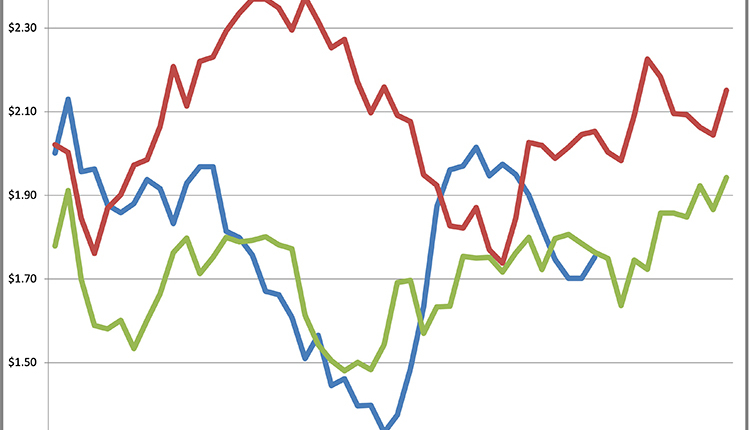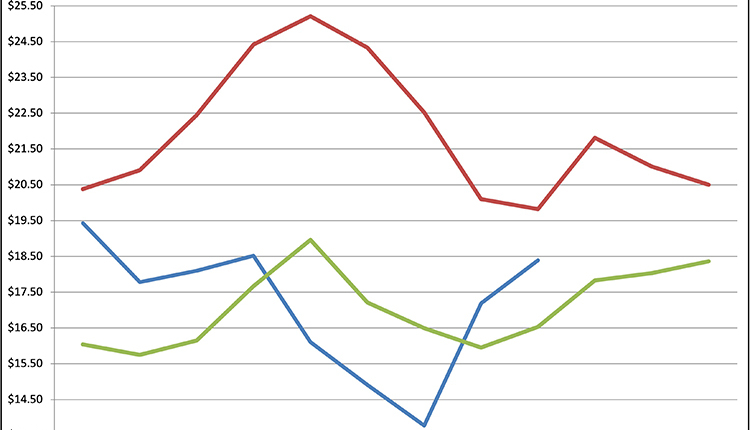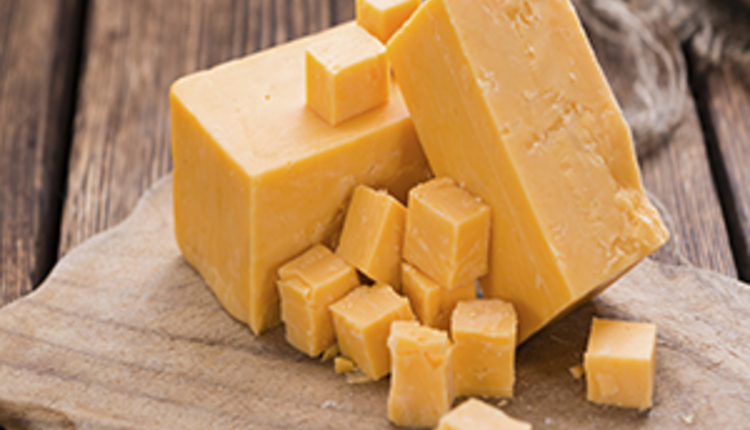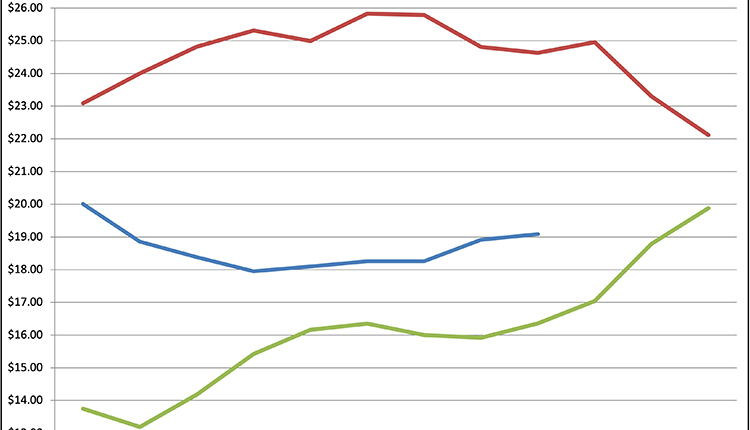
With cattle supply on a downward trend across the United States, beef bull prices have skyrocketed, and ranchers are under more pressure than ever to choose wisely come auction time. Coupled with the growing beef-on-dairy trend, this shortage has led to fierce competition, including at a recent auction that caught the attention — and a spot on the front page — of The Wall Street Journal.
Reporter Patrick Thomas covered the March auction at TD Angus Ranch in North Platte, Neb., where he noted the average selling price for a bull ran $10,000 — an amount that has doubled since 2018. The twin forces of bull shortages and appetite for hybrids means that ranchers — some willing and others led by the nose — are paying more for quality bulls. And although some of the higher valued cattle at the auction went for four and five times that average price, Thomas noticed several ranchers holding back due to the fierce bidding. Others seemed to look to their counterparts for cues; buyer Randall Grimmius attended the auction, and The Wall Street Journal article noted that once he bid — nearly 300 bulls into the 400-count roster — others followed suit. Grimmius told the newspaper he was hunting for a bull for his operation; his winning bid of $45,000 could be indicative of what to expect in cattle auction pricing in the near term.
But it wasn’t only the high prices and competitive bidding that Thomas noticed. The Wall Street Journal piece provided readers with the basics on bull assessment — the genetic aspects — but much of the story focuses on the phenotypic characteristics of each animal, and how experienced buyers rely on more than just the stats when choosing a bull. The article can be found at wsj.com/articles/bulls-cattle-auction-prize-rancher-5d258bd9.








